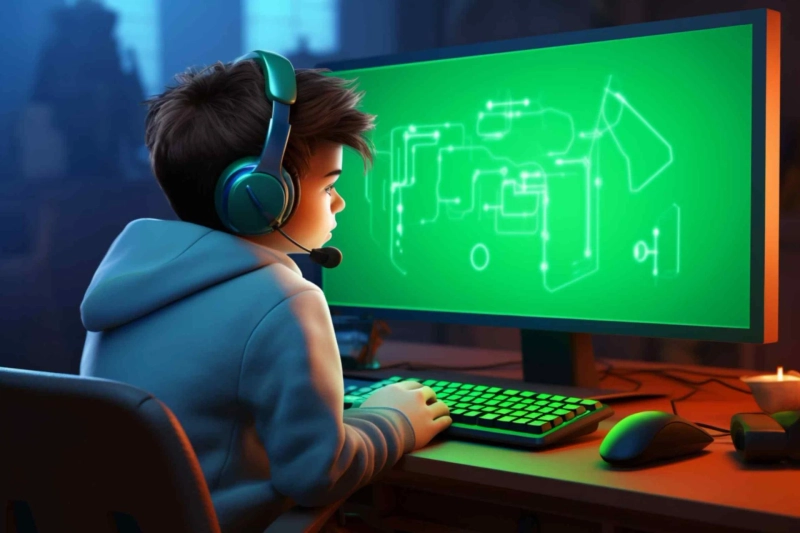The gaming industry continues to evolve rapidly, with new technologies and tools emerging every year. For a 3D Game Development Company or an NFT game development company, selecting the right 3D modeling software is crucial for creating immersive and visually stunning games. In this article, we will explore the top 10 3D modeling software options for 3D game development in 2024.
1. Blender
Why Blender is a Top Choice
Blender has become a favorite among game developers due to its open-source nature and comprehensive features. It offers powerful modeling tools, sculpting, texturing, and animation capabilities, making it a versatile option for creating detailed 3D assets.
Key Features
- Open Source and Free: Accessible to everyone, which is ideal for indie developers and small studios.
- Extensive Toolset: Includes everything from basic modeling to advanced simulations and physics.
- Community and Support: A large and active community provides tutorials, plugins, and support.
2. Autodesk Maya
The Industry Standard
Autodesk Maya is renowned for its robust features and is widely used by professional game developers and studios. It excels in character modeling, animation, and rigging, making it a go-to choice for complex game development projects.
Key Features
- Advanced Animation Tools: Industry-leading animation capabilities.
- Customizability: Extensive scripting options with MEL and Python.
- Integration: Seamlessly integrates with other Autodesk products and game engines.
3. 3ds Max
Versatile and Powerful
3ds Max, another Autodesk product, is known for its ease of use and powerful modeling tools. It is especially popular for creating environments, props, and architectural visualizations in games.
Key Features
- User-Friendly Interface: Easy to learn and use, making it accessible for beginners.
- Comprehensive Toolset: Includes everything needed for modeling, texturing, and rendering.
- Plugin Support: A wide range of plugins to extend its functionality.
4. ZBrush
The Sculpting Powerhouse
ZBrush is the go-to software for detailed character and creature modeling. Its powerful sculpting tools allow artists to create highly detailed models with ease, making it indispensable for character artists in game development.
Key Features
- High-Resolution Sculpting: Capable of handling millions of polygons.
- Dynamesh and ZRemesher: Tools for creating and refining complex models.
- Polypainting: Allows for detailed texture painting directly on the model.
5. Cinema 4D
The All-Rounder
Cinema 4D is known for its intuitive interface and powerful toolset, making it suitable for both beginners and experienced professionals. It is widely used for creating motion graphics, but its modeling and animation tools are equally impressive.
Key Features
- Ease of Use: Intuitive interface and workflow.
- Powerful Animation Tools: Excellent for both character and motion graphics animation.
- Integration: Works well with various game engines and other 3D software.
6. Houdini
For Procedural Excellence
Houdini stands out for its procedural generation capabilities, making it ideal for creating complex environments and effects in games. It is widely used for simulations and visual effects but is also powerful for 3D modeling.
Key Features
- Procedural Workflow: Create and modify models using procedural nodes.
- VFX and Simulations: Industry-leading tools for creating effects and simulations.
- Flexibility: Highly customizable with a powerful scripting language.
7. Modo
Artist-Friendly
Modo is praised for its artist-friendly tools and intuitive interface. It offers a good balance of modeling, sculpting, and texturing tools, making it a solid choice for game developers.
Key Features
- User Interface: Clean and easy to navigate.
- Direct Modeling Tools: Efficient tools for creating and modifying models.
- Sculpting and Painting: Integrated sculpting and painting tools for detailed work.
8. SketchUp
For Quick Prototyping
SketchUp is known for its simplicity and ease of use, making it an excellent choice for quick prototyping and architectural modeling. While it may not offer the advanced features of other software, it is perfect for rapid development and iteration.
Key Features
- Ease of Use: Simple and intuitive interface.
- Quick Modeling: Ideal for creating basic models and environments quickly.
- Extensions: A wide range of plugins to enhance functionality.
9. Substance 3D Painter
The Texturing Master
While primarily a texturing tool, Substance 3D Painter is essential for any game development pipeline. It allows for detailed texture painting and material creation, which are critical for realistic game assets.
Key Features
- Real-Time Texturing: Paint textures directly on 3D models in real-time.
- Material Creation: Create complex materials with ease.
- Integration: Seamlessly integrates with most 3D modeling software and game engines.
10. LightWave 3D
Comprehensive and Affordable
LightWave 3D offers a comprehensive suite of tools for modeling, texturing, and animation. It is a cost-effective solution for game developers looking for professional-grade features without the high price tag.
Key Features
- Complete Toolset: Everything needed for game asset creation.
- Affordable: More budget-friendly compared to some other professional tools.
- Ease of Learning: A straightforward interface and workflow.
Conclusion
Choosing the right 3D modeling software is crucial for any 3D Game Development Company or NFT game development company. The tools listed above offer a variety of features and capabilities to suit different needs and budgets. Whether you are looking for advanced animation tools, powerful sculpting capabilities, or ease of use, there is a software option that fits your requirements.
Investing in the right 3D modeling software not only enhances the quality of your game assets but also streamlines your development process, making it easier to bring your creative visions to life. As the gaming industry continues to grow and evolve, staying updated with the latest tools and technologies is essential for staying competitive and delivering outstanding gaming experiences.



